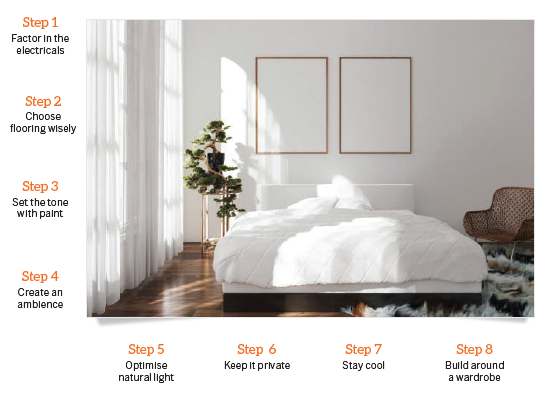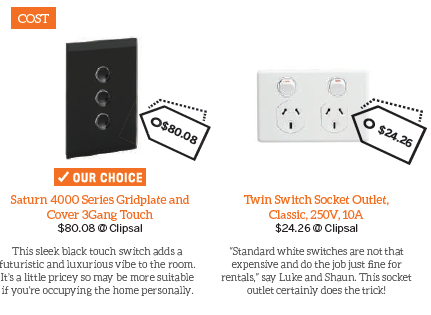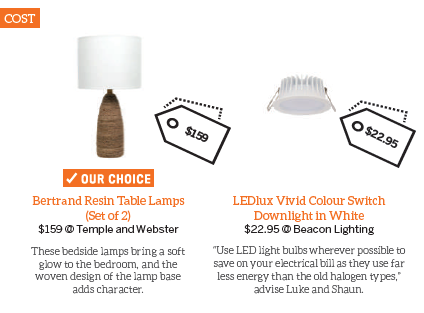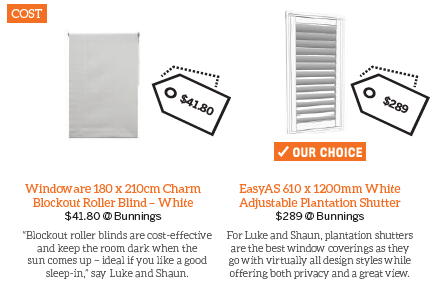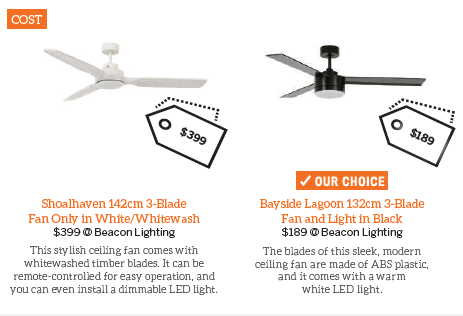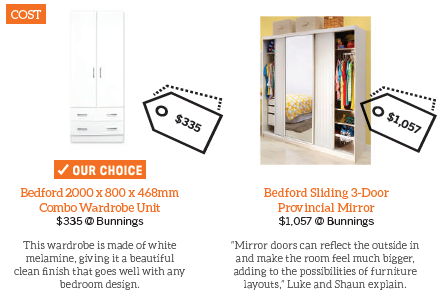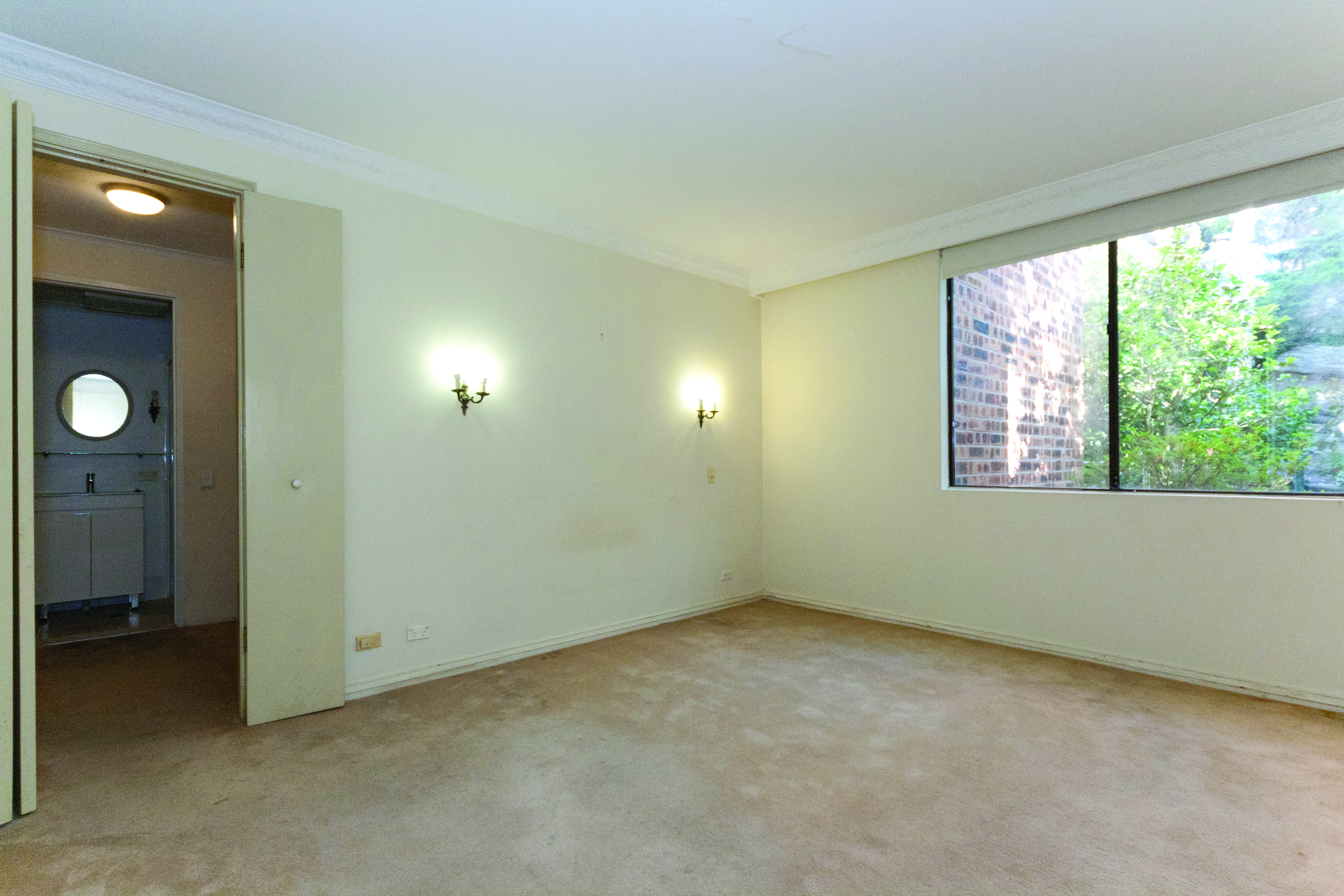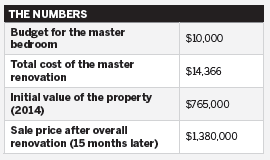The bedroom is arguably one of the most important spaces in a home. That’s where the homeowner or tenant will be spending much of their personal time – not just sleeping but getting ready for the day in the morning and decompressing in the evening.
So this room needs to be a space that’s the epitome of comfort – somewhere you know you can relax.
For this reason, homebuyers and renters generally look very closely at a property’s master bedroom. How large is the space? Is it well lit? Do the windows let in enough light during the day? Does it have enough power sources, most importantly near the bed?
How effectively a bedroom caters to a person’s needs can often be a deciding factor that determines how attractive a property is to a potential buyer or tenant.
The crucial first step in a bedroom renovation is to first see it in your mind’s eye.
“Measure and plan out the space to see what will fit. Then hop onto Pinterest, Instagram or whichever inspirational platform floats your boat and gather some ideas,” say professional renovators Luke Whittington and Shaun Hanley.
“This will help ascertain what your style is and give you direction when it comes to choosing your furnishings and colours.”
From there, it’s quite easy to achieve a functional, warm and inviting bedroom space without spending a small fortune along the way.
STEP ONE: FACTOR IN THE ELECTRICALS
One important thing you should plan for before you do any work on a bedroom is the number of power points and switches you’ll need.
“Electrical labour costs can get out of hand if not carefully considered early on. Walls need to be cut open in order to install new wiring, which then need to be patched or repaired afterwards. This is often where the bulk of the labour cost comes from,” Luke and Shaun explain.
“Think about the layout of the bedroom and how many power outlets you’re going to need. Positioning outlets as close to existing wiring as possible will help keep costs down.”
TOP TIP
“Plasterboard walls are relatively easy to patch; however, rendered or masonry walls are much harder to repair and often end up looking different to the rest of the fi nished wall,” say Luke and Shaun.
STEP TWO: CHOOSE FLOORING WISELY

“Floating floors are a great stylish choice, but they do tend to show up the dust more and therefore require regular sweeping or vacuuming,” the pair say.
“Carpet feels nice underfoot but can stain more easily. It becomes flat and dented over time beneath heavy furniture legs. Depending on whether you choose a plush or loop pile, some marks may be more or less visible than others.”
Your best option in a rental property is generally the most durable option for your area, taking into consideration weather and lifestyle.
TOP TIP
“Natural products like real timber or wool are wonderful products to use but require more maintenance than synthetic materials like laminate, nylon or triexta – an important consideration if you’re renovating a rental property bedroom,” say Luke and Shaun.
STEP THREE: SET THE TONE WITH PAINT
How you colour your bedroom will be dependent on the kind of environment you want to create.
“In most cases, one’s bedroom is usually a place of relaxation and tranquillity; as such, the majority prefer soothing neutrals like whites, light greys and taupes, or soft, muted colours such as pastels to set the mood,” Luke and Shaun explain.
“Painting your ceiling a lighter tone than the walls can make the ceiling feel higher and your bedroom appear larger. Darker, moodier colours can create cozy, warm spaces, but they also make a room seem smaller.”
TOP TIP
“If you’d like a bit of contrast, you can choose to go a shade lighter or darker for the trimwork and doors. You can also accentuate detailed ceiling roses, cornices and skirting boards this way,” say Luke and Shaun.
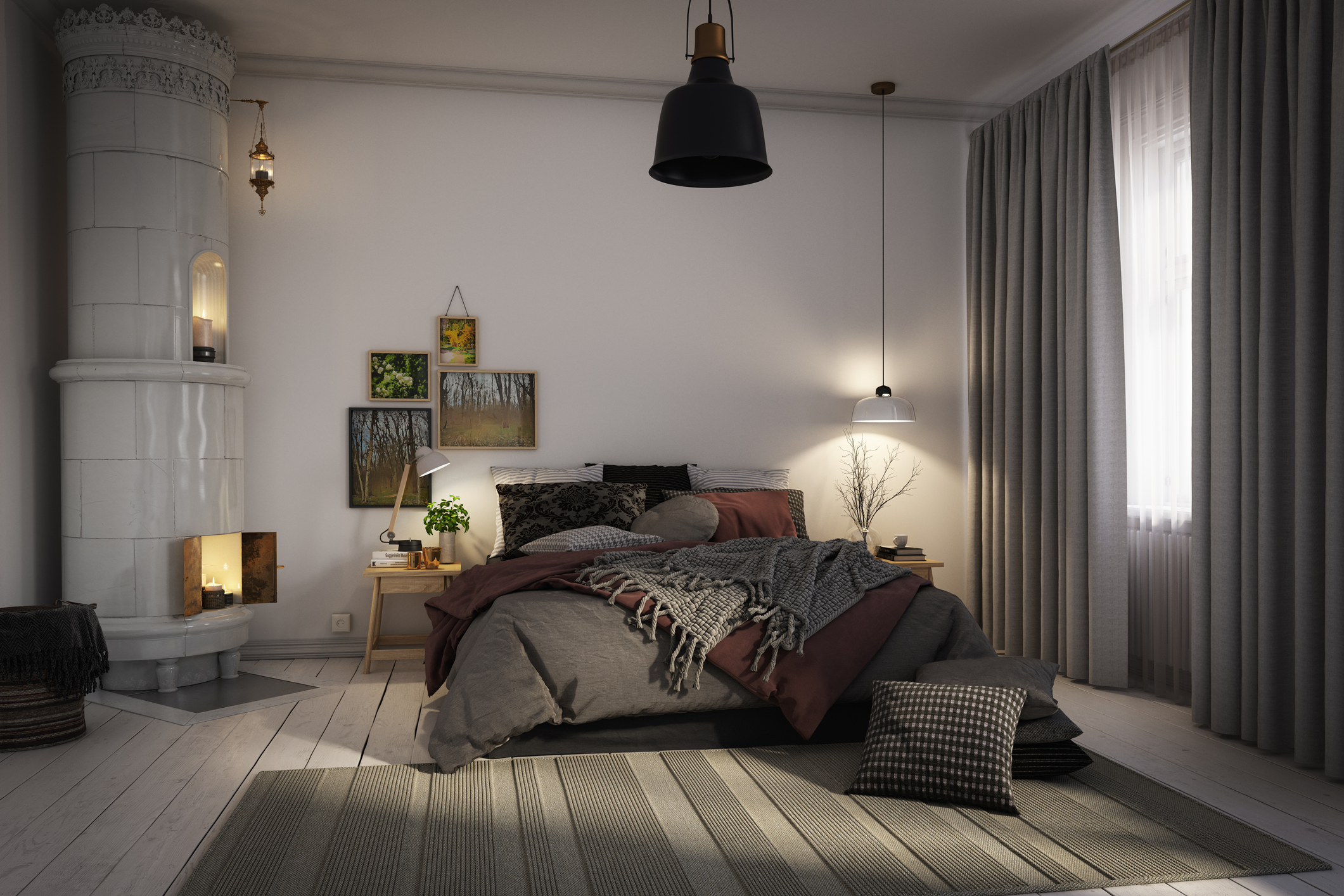
STEP FOUR: CREATE AN AMBIENCE
Lighting is a vital feature of a bedroom, as the wrong lights can make the space look cold and forbidding rather than warm and inviting.
“Rule of thumb: a warmer light is better in a bedroom. The most popular modern upgrade option is to incorporate a false ceiling with LED downlights, but a false ceiling can add considerable cost to your budget,” say Luke and Shaun.
“Dimmer lights are a great way to control the mood but come at a higher cost; floor and/or side-table lamps are a cost-effective way to incorporate additional mood lighting in a bedroom.”
TOP TIP
“Speak to an expert lighting consultant about the right type of bulb with the appropriate lumens and beam span for your individual bedroom. Many lighting businesses have qualified consultants who offer free consultations,” say Luke and Shaun.
STEP FIVE: OPTIMISE NATURAL LIGHT
Having the right lighting at night is crucial, but during the day it’s always best to use as much natural light as you can. The windows you install can either enhance or limit your potential in this respect.

Being able to maximise natural light sources also means you can save on electricity costs, as you don’t have to use as much artificial lighting.
TOP TIP
You don’t necessarily have to get new windows; sometimes a good cleaning may be all you need to maximise your existing window set-up. Wall-mounted mirrors can also be used to reflect the light coming through smaller windows.
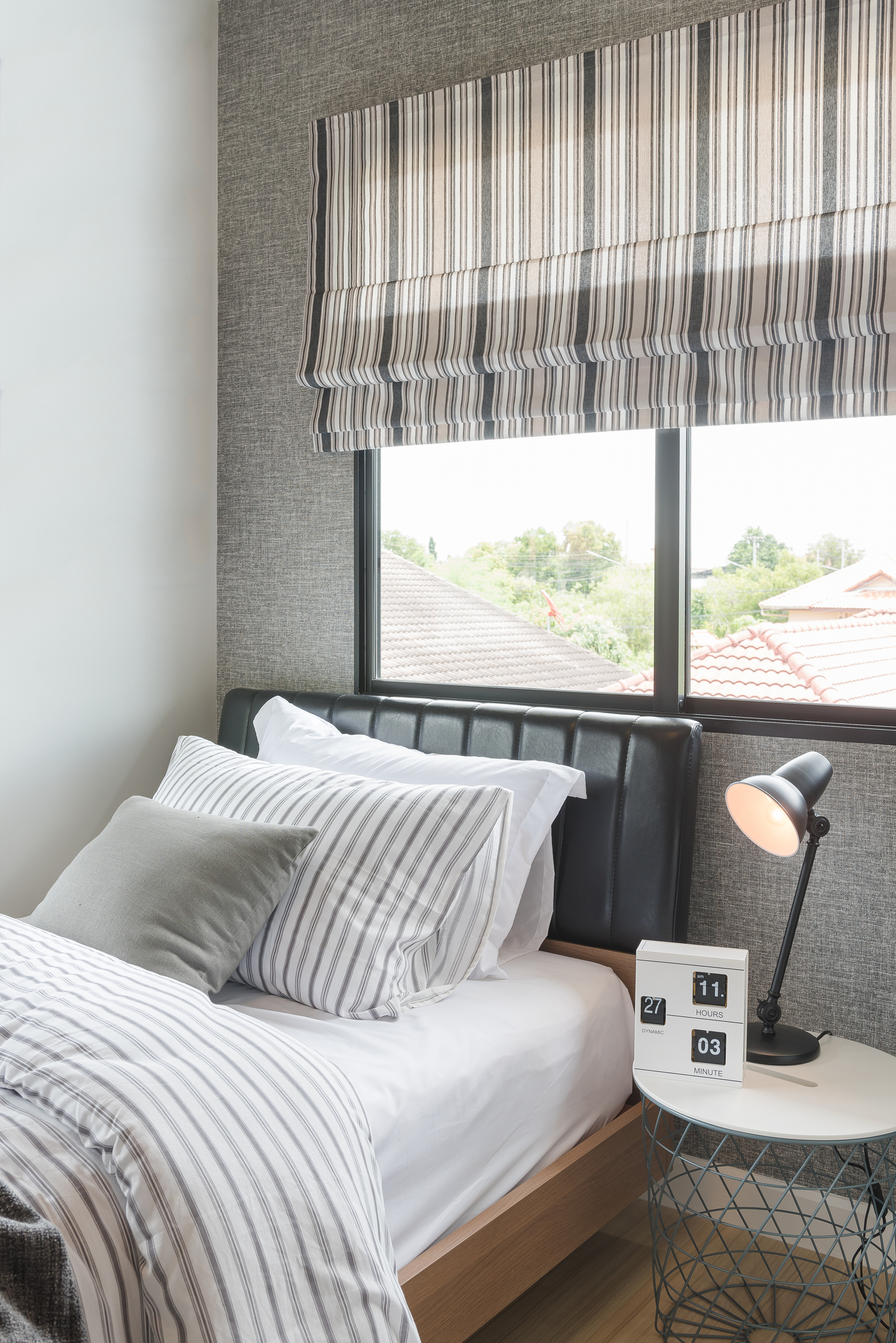
STEP SIX: KEEP IT PRIVATE
The bedroom is the home’s most personal space, so naturally you want to keep the interior out of sight of prying eyes, especially if you have clear glass windows.
“Depending on what kind of look you’re going for and how much natural light you want to allow into the bedroom, there are a few different options for window coverings. Sheer curtains are currently on trend; however, in the bedroom you may want to block the morning light for a better night’s sleep,” say Luke and Shaun.
“A light-filtering blind will block out most of the light and offer privacy but still allow you to see outside."
TOP TIP
“Be practical in your choice of window coverings. If you choose only what looks good, you may be sacrificing a good night’s sleep in the name of fashion – and sleep is way more important!”
STEP SEVEN: STAY COOL
It’s essential to have a way of keeping COST cool in the bedroom during summer, but air conditioning can be costly, particularly if you’re looking to rent out the property. So Luke and Shaun recommend ceiling fans, which are a “cheaper alternative to air con that can look quite nice as well”.
“Fans with built-in lighting are practical, look great and will even save you on product and labour costs as it’s an all-in-one installation. They are relatively easy to install using existing wiring, and this reduces the costs normally associated with patching walls or ceilings where new electrical wiring has been run.”
TOP TIP
Luke and Shaun note that “timber blade fans are generally quieter, which may be more appealing in a bedroom; however, due to the shape of plastic and metal fan blades, these tend to move more air”.
STEP EIGHT: BUILD AROUND A WARDROBE
One major feature that Luke and COST Shaun believe is vital to a bedroom is a good-quality wardrobe.
“It’s an essential item that can make or break a bedroom – it’s a big selling point for renters and buyers! If you have the space for one, there are plenty of options, from high-end to low-cost. If you’re not appealing to a luxury market or your budget is tight, built-ins are a good alternative. Opting for standard internal confi gurations with the supplier will help keep costs down as well.”
It’s important to know your demographic when making this decision so you can decide whether to splurge or go basic.
TOP TIP
“Sliding-door wardrobes are a good option in smaller rooms,” say Luke and Shaun. “They are much easier to navigate for the end user, compared with swinging joinery doors, which take up a lot of room.”
CASE STUDY
When Luke and Shaun saw the worn-out, AFTER poorly lit master bedroom of the Neutral Bay property they were renovating for sale, they knew they had hit the jackpot.
“The room had very large proportions, including a large walk-in robe and en suite. As the project developed, we realised the potential of this room to be a real selling point for the whole renovation,” they explain.
“Due to the original rundown condition of the room and the poor natural light, it was a big negative overall. However, once we decided to up the ante with this room, we decided to go all out on custom-made built-in robes.”
Since the property was located in an affluent area, Luke and Shaun chose to go with furnishings that evoked luxury, like strip lighting under the cupboard and downlights to compensate for the limited natural light in the room. They also added carpeting to make the space feel warmer, and installed a new, larger mirror in the en suite.
Their favourite part of the renovation ended up being the construction of a walk-through wardrobe with sensor lighting and inbuilt powder desk.
“Upon entry through the open wardrobe into the en suite, the wardrobe lights come on automatically, which gave a feeling of luxury to the audience we were appealing to.”
Luke and Shaun thought they had already set a high budget at $10,000 for the master bedroom alone, but it wound up not being enough – electrical costs related to the construction of the wardrobe were part of the reason they exceeded their budget.
Before
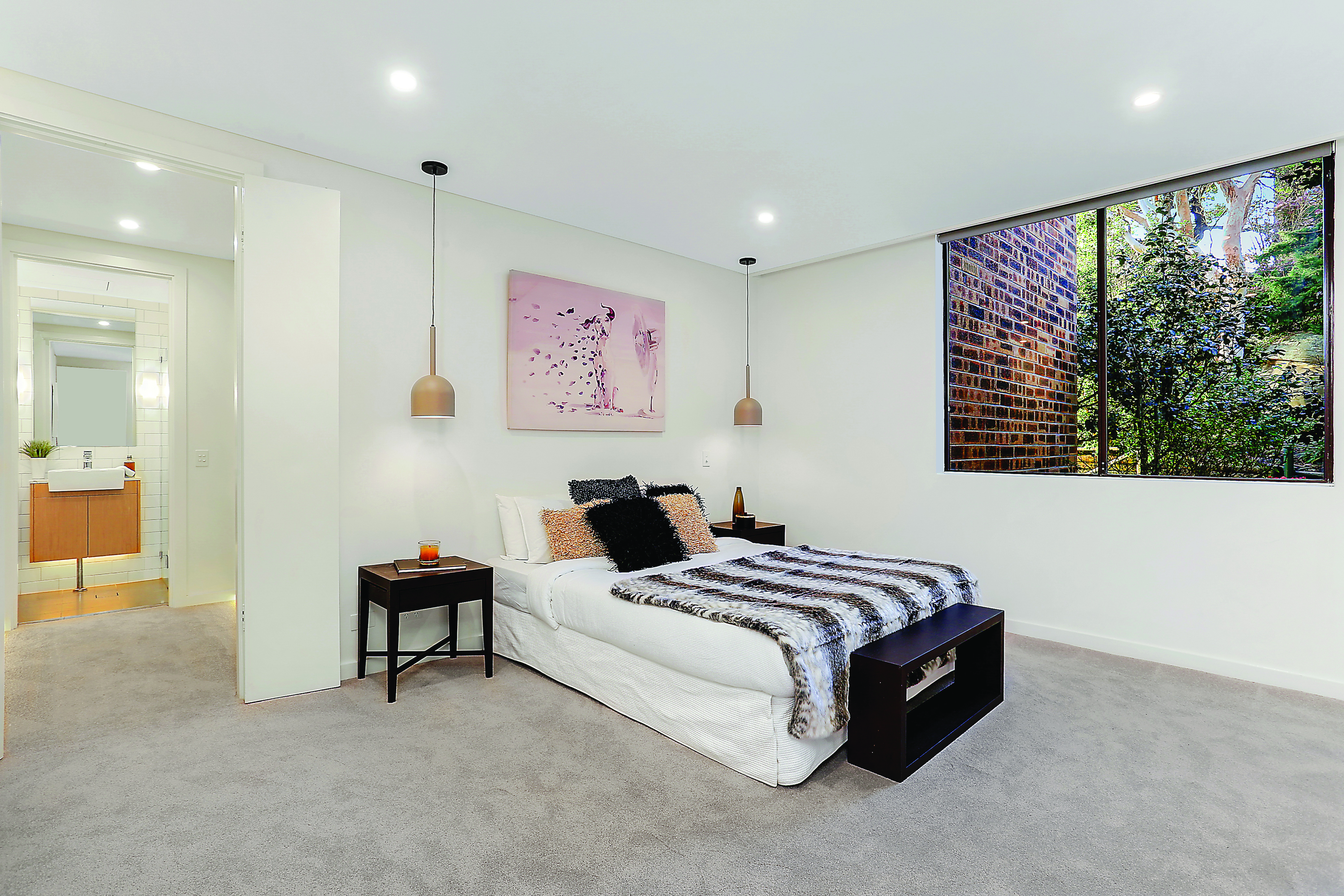
After
“We were over budget by an additional $4,366 – this blowout was due to the custom-made walk-in robe joinery and the electrical costs spent to achieve the luxury finish,” they say.
However, as their overall renovation was able to add over $600,000 to the property’s value in just 15 months, Luke and Shaun don’t regret how they spent the money.
“Our work resulted in a luxurious, bright master bedroom with house-like proportions, and this room was the most talked-about feature of the property during the sales campaign!”
 Shaun Hanley and Luke Whittington
Shaun Hanley and Luke Whittington
are Sydney-based apartment renovation experts and owners of Reno Pack Pty Ltd
